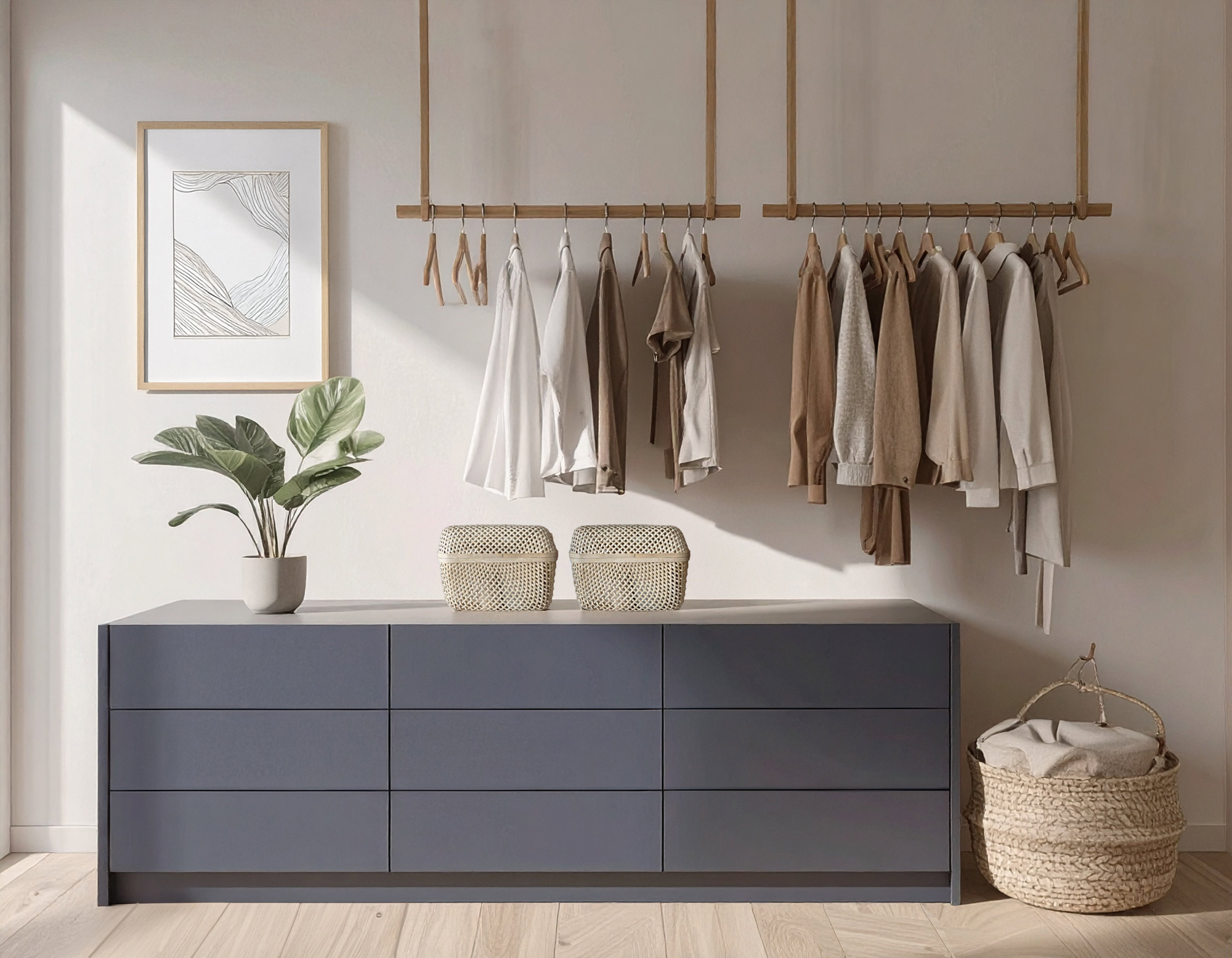How to stay organized: Systems instead of stress

*Image inspired by my own wardrobe
Some people are naturally tidy. They clean up right away, never leave things lying around, and always seem to live in order. And then there are people like me: creative minds full of energy and ideas, but often struggling to keep things organized.
The truth is: I love order. It gives me calm and clarity. Yet for a long time, I couldn’t seem to maintain it. That changed when I discovered the right system.
In this article, you’ll learn why chaos happens, why tidying up without a system never lasts, and which methods (from Marie Kondo to practical hacks for stressed people) finally helped me bring lasting structure into my everyday life.
Why chaos happens
Clutter and chaos have many causes. The most common are:
- Life with young children – chaos is part of the daily routine, because kids are just kids.
- Lack of time and stress – when life gets hectic, we switch to reaction mode, and tidying up takes a backseat.
- Procrastination – especially in the evenings, when energy runs low, cleaning up is the first thing we postpone.
The problem: Even if you tidy regularly, chaos returns quickly. It feels like a never-ending cycle.
Why we struggle to stay organized
Here’s the simple truth: Without a system, there is no order.
If you tidy up without structure, you’ll end up putting things away in random places. Next time, you won’t know where they belong and clutter builds up again.
Organization requires clear rules, designated spaces, and systems that make tidying easier. In her books, Marie Kondo teaches functional systems for all sorts of problem areas, which can serve as inspiration. I personally apply various aspects of her organizing systems, but also enjoy creating my own systems, tailored to my needs.
The Marie Kondo method: Simple but powerful
Japanese tidying expert Marie Kondo has inspired millions of people, myself included. Her method works because it’s simple and clear:
- Organize by category
- Everything has a fixed spot where it belongs.
- Visibility is key – you should be able to see everything at a glance.
- Less is more – keep only what you truly need or love.
The first time feels like a massive challenge. When you finally start sorting and decluttering, you’ll find things you forgot you even owned. And that’s the point: if you didn’t even know it was there, it’s probably time to let it go.
The art of letting go
A key step toward organizing is sorting things out. Many people struggle with giving things away. I've learned that it's incredibly liberating.
When I moved from Germany to Switzerland, I took only half of my belongings. Later, when I moved to California for over three years, I brought even less. And you know what? I didn’t miss a single thing.
My tip: Anything you find while tidying up that you've long forgotten about can go. Give it away, donate it, or throw it away. The fewer things you own, the easier it will be to establish a functioning system and keep things organized.
You can also give unused items a “second chance.” For example, if you’re unsure about certain clothes, set a deadline: place them visibly in your closet and give them a few months. If you still haven’t worn them by then: it’s time to say goodbye.
My wardrobe: From chaos to structure
My closet used to be a constant battle. Today, it’s always organized thanks to the Marie Kondo folding system.
- lothes no longer lie stacked in piles but are folded upright in drawersso I can see everything instantly.
- I created clear categories: shorts, long pants, skirts, sportswear, T-shirts, tops, sweaters, loungewear.
- Underwear, socks & co. live in baskets, while blouses and dresses hang neatly on the rack.
The best part? Folding now takes very little time and seeing my tidy closet every day makes me proud and motivated to keep it that way.
Creative systems for stressed people: The “Dumping Space”
Especially with children or during stressful times, you sometimes need practical quick fixes. One idea I’ve tried: Dumping Space – a defined spot where things can temporarily land.
For example: a storage bench or trunk in the living room, disguised as seating or a side table. Everything that’s in the way can be tossed in there when time is short. The clutter is out of sight, and the stress level drops immediately.
Important: Set a weekly “reset time” to empty the Dumping Space and put things back in their proper places.
Conclusion: Order needs systems
Being organized is not a personality trait. It’s a matter of structure. Whether it’s kids, stress, or procrastination: with the right systems, tidying becomes easier and more sustainable.
Today, my closet is so organized I can hardly believe it myself. And it doesn’t take extra time or energy to keep it that way, because the system does the work for me.
If you want more order at home but struggle to find a system that works, lisannco Interior Design is happy to help you create one.


